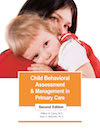Temperament and Parenting
Infant & Child Temperament FAQS

Temperament is behavioral style: the how of behavior rather than the what or why. Temperamental differences are present at birth; they influence how children behave toward individuals and objects in their environments and how they are affected by the environment.
Temperament characteristics explain in part how individuals with many stresses may do well while some with little or no stress have difficulty.
While some infants are mild and joyful others are irritable and cry persistently. Easy babies are so pleasant to care for they may receive (and give back) loads of affection and attention. The fussy, spirited child may scream and kick when given attention. As development unfolds, the fussy child may feel aversive to the caregiver and may receive less nurturance and affection.
This is a striking reality for some parents who have an easy baby followed by a feisty one (or vice-versa). Many parents feel guilty and wonder if they have done something to harm their child because the spirited ones are so much more difficult to raise.
Temperament may make certain children in certain environments more likely to have these problems. These 'risk factors' occur when there is a mismatch between the child's temperament and some demand in the environment-a poor fit between the child's temperament and the expectations for behavior in the situation. 'Easy' babies and children may have 'protective' factors where mismatches are rare and the rate of conflict is low.
There are four basic ways to use temperament information to help children and their caregivers:
- a)
Education about the existence of temperament differences;
- b)
Individual behavioral assessment of a particular child, using a standardized questionnaire;
- c)
Environmental intervention; systematically changing the environment to accommodate temperamental characteristics;
- d)
Support groups to share experiences, discuss parenting techniques, and strategies for coping with a spirited youngster.






